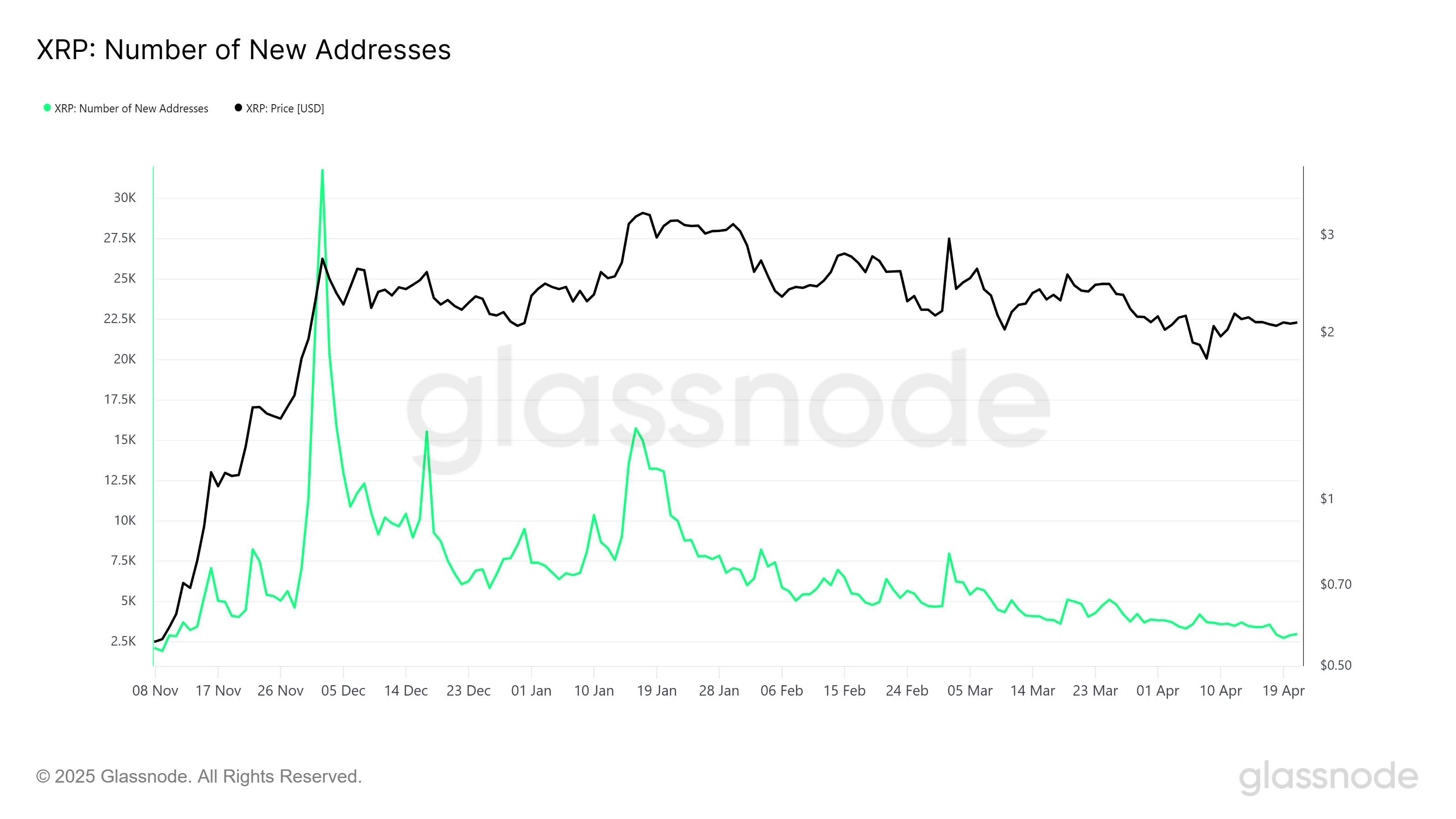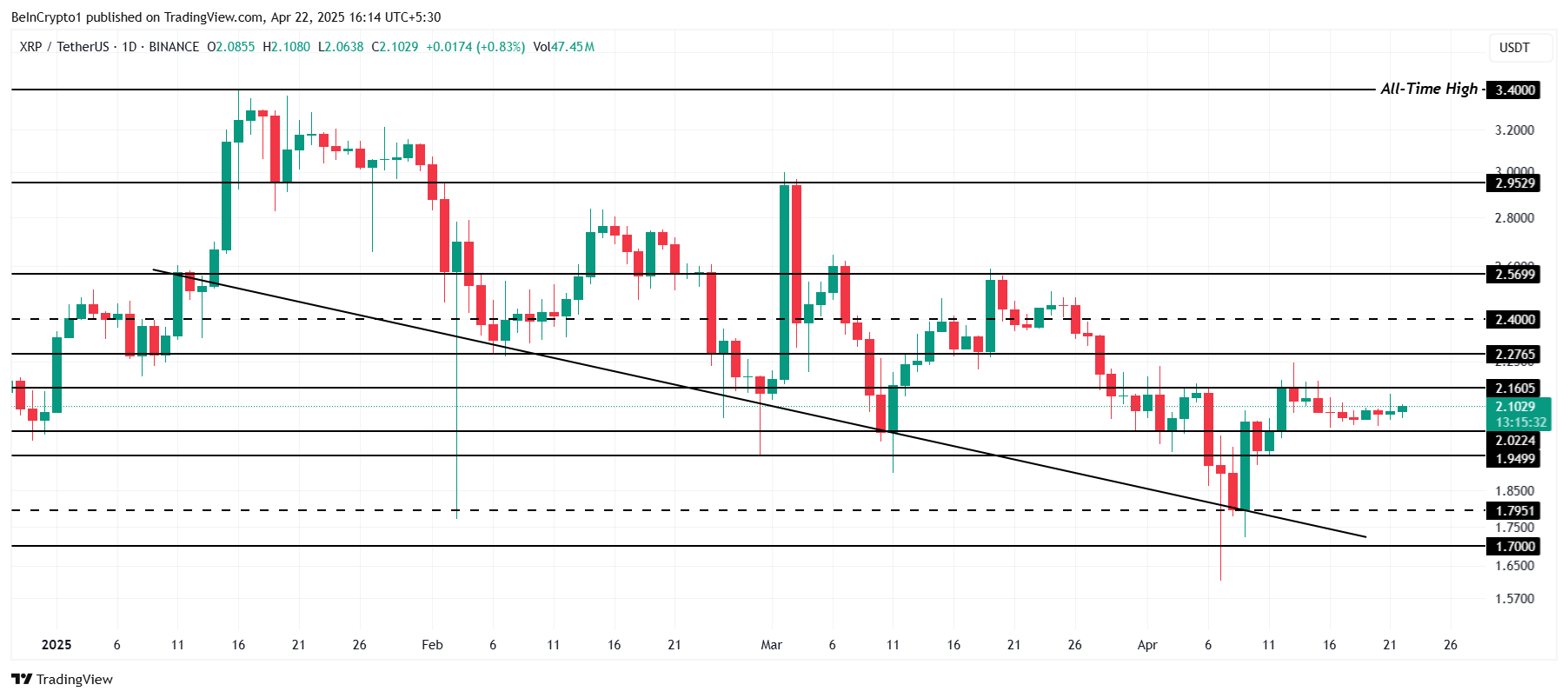The crypto market has seen a surge in new meme coins. They are mainly from three chains: Ethereum, Solana, or Base.
Thus, BeInCrypto has analysed the best-performing meme coins from all three chains for investors to watch today.
Pudgy Penguins (PENGU)
- Launch Date – December 2024
- Total Circulating Supply – 62.86 Billion PENGU
- Maximum Supply 88.88 Billion PENGU
- Fully Diluted Valuation (FDV) – $1.27 Billion
PENGU has seen a 26% increase in the last 24 hours, currently trading at $0.0143. The altcoin successfully breached the $0.0129 resistance level and is now eyeing the $0.0180 resistance. This upward movement signals growing investor interest, positioning PENGU for further potential gains in the near term.
As a meme coin on the Solana chain, PENGU is one of the day’s top performers. If it breaches the $0.0180 resistance, it could set its sights on the next target at $0.0225. This would represent a significant price jump, supported by continued market interest and momentum.
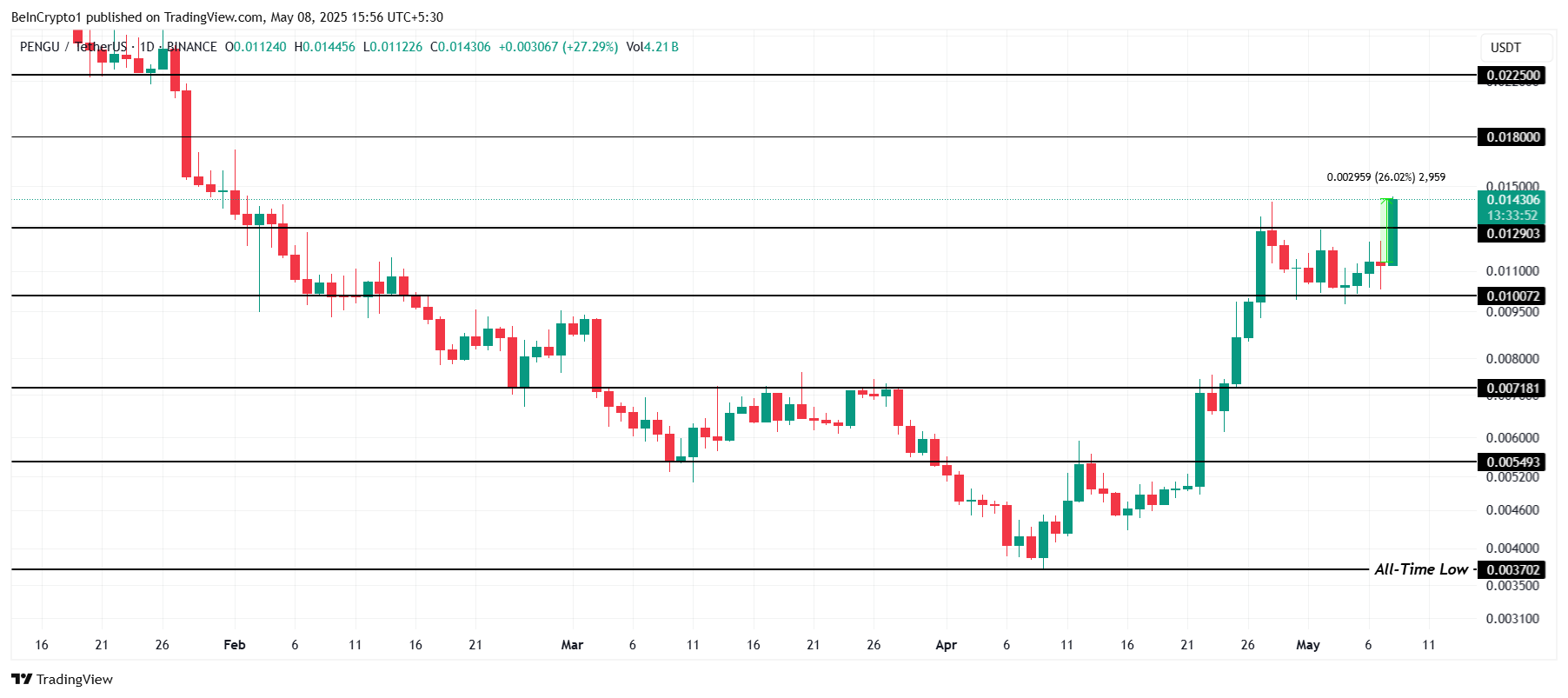
However, if PENGU fails to secure $0.0129 as a support floor, it risks falling below $0.0100. A drop to $0.0071 would invalidate the bullish thesis, signaling a potential reversal.
Mog Coin (MOG)
- Launch Date – July 2023
- Total Circulating Supply – 390.56 Trillion MOG
- Maximum Supply – 420.69 Trillion MOG
- Fully Diluted Valuation (FDV) – $394.31 Million
MOG has posted a 40.69% increase, becoming the best-performing meme coin of the day. Currently trading at $0.0000009248, the altcoin represents the Ethereum blockchain. This notable rise indicates growing investor interest, and its continued upward movement could push MOG further into the spotlight in the meme coin sector.
MOG is now facing resistance at $0.0000009399. Successfully breaching this level is essential for the meme coin to establish a 3-month high. If it manages to break this barrier, MOG could push past $0.0000010000, with the next target set at $0.0000012143, marking significant growth.
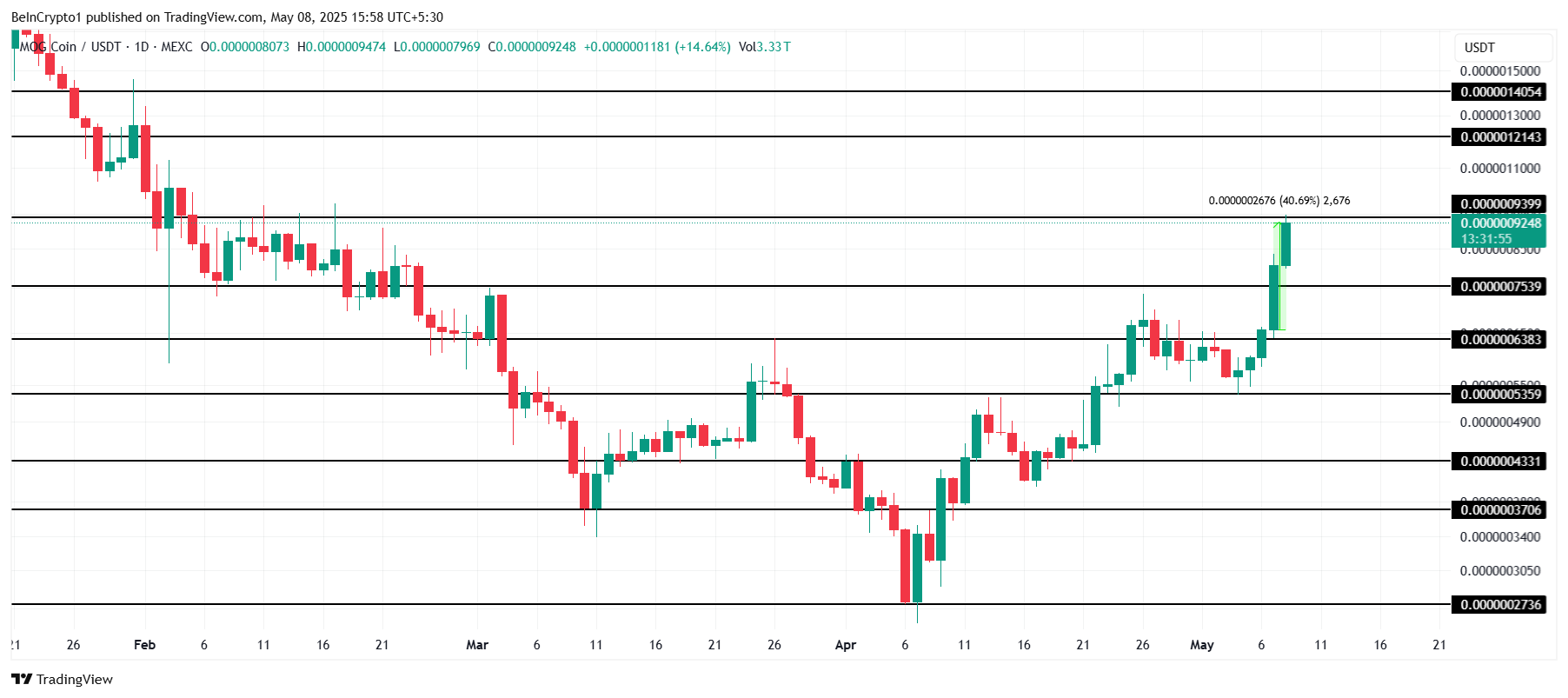
If MOG fails to breach $0.0000009399, it risks a decline to $0.0000007539. A drop below this level would invalidate the bullish outlook, erasing recent gains.
Brett (BRETT)
- Launch Date – March 2024
- Total Circulating Supply – 9.91 Billion BRETT
- Maximum Supply – 10 Billion BRETT
- Fully Diluted Valuation (FDV) – $630.98 Million
BRETT has surged 23% today, becoming one of the top performers. Currently trading at $0.063, the altcoin, based on the Base chain, is facing resistance at $0.068. If this resistance is breached, BRETT could continue its upward trajectory, attracting more investor interest and potential gains.
Breaching the $0.068 resistance would mark a 3-month high for BRETT, opening the path toward $0.082. A successful move beyond this point would drive further price increases, offering significant returns to investors. Continued market momentum could propel BRETT into even higher territories in the coming weeks.
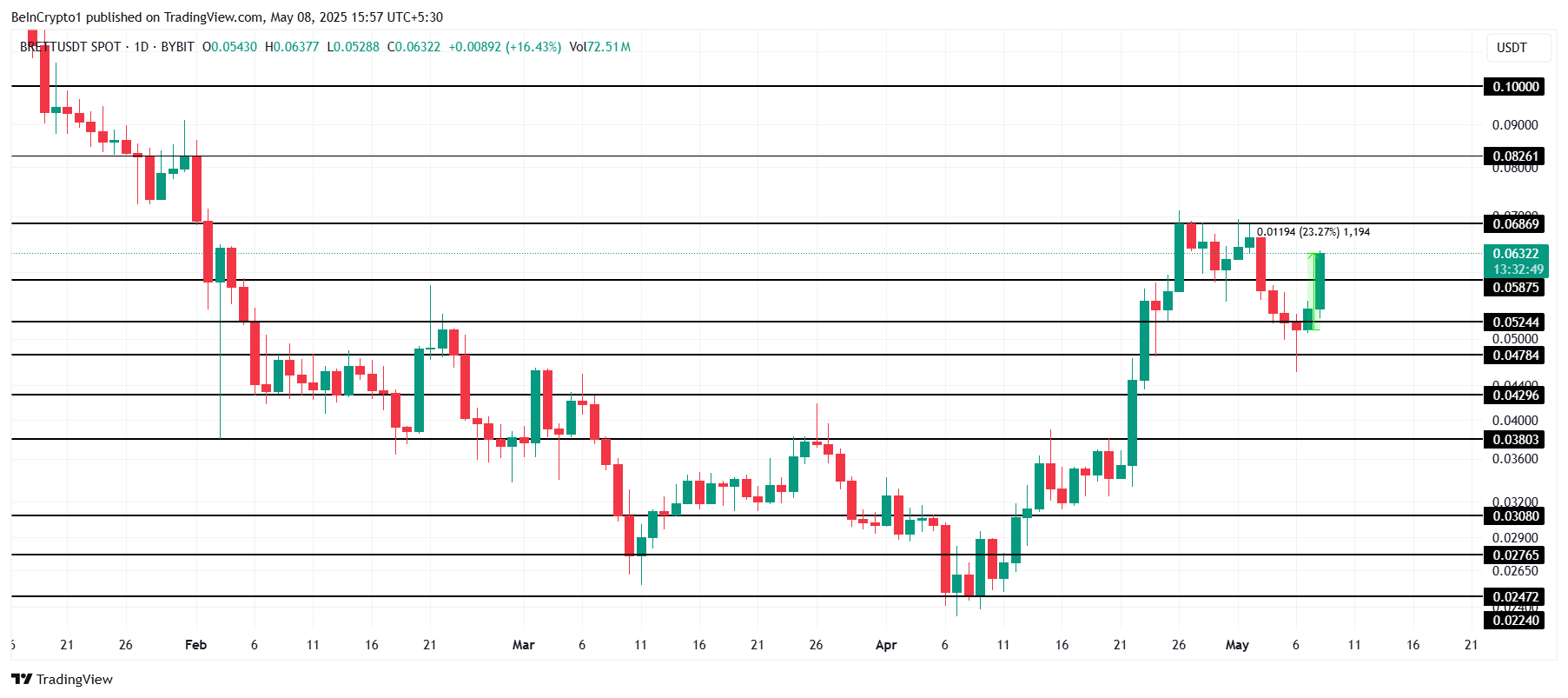
However, if BRETT fails to break the $0.068 barrier, its bullish momentum could falter. A reversal below this level could pull the altcoin down to $0.052, and potentially as low as $0.047. This decline would invalidate the bullish thesis, signaling potential losses for investors if market sentiment weakens.
The post PENGU, MOG, BRETT Lead Gains On Top 3 Chains | Meme Coins To Watch Today appeared first on BeInCrypto.





